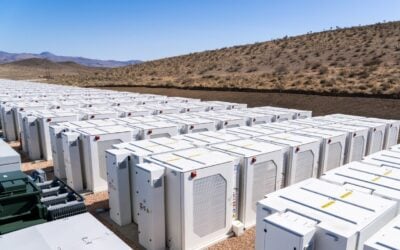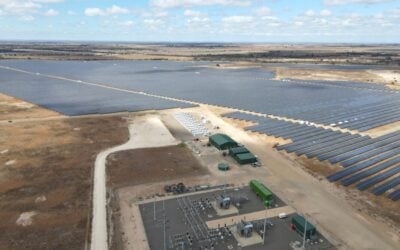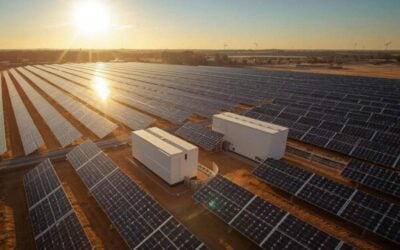Caterpillar has launched a microgrid solution that can be figured to incorporate thin-film solar panels and various energy storage technologies. Image: Wikimedia user: joedamadman.
Global maker of construction and mining equipment Caterpillar has launched an integrated micro-grid solution which combines solar PV and energy storage with the company’s power generation equipment.
Cat Microgrid Technology is available in a range from 10kW to 100MW of modular solutions. It can be configured to include thin-film solar panels, Caterpillar generator sets and a selection of energy storage technologies, including ultracapacitors and lithium-ion batteries.
As might be expected, Caterpillar said the microgrid technology is suitable for “islanded” applications such as telecoms towers, rural electrification, mining and industrial facilities where the systems can use a combination of green energy, storage and backup, most likely in the form of diesel generators, to form complete energy networks.
Last year, Caterpillar signed a deal with First Solar for thin-film PV panels and then an agreement with energy storage provider Fluidic Energy.
Try Premium for just $1
- Full premium access for the first month at only $1
- Converts to an annual rate after 30 days unless cancelled
- Cancel anytime during the trial period
Premium Benefits
- Expert industry analysis and interviews
- Digital access to PV Tech Power journal
- Exclusive event discounts
Or get the full Premium subscription right away
Or continue reading this article for free
In 2015, at a meeting of stakeholders and contributors to the International Renewable Energy Agency (IRENA’s) roadmap for electricity storage at which PV Tech and Energy-Storage.News were granted access, Janice Lin of the California Energy Storage Alliance (CESA) identified Caterpillar as the sort of company with the global reach, manufacturing scale and technical experience to be a strong candidate for accelerating the growth of solar-plus-storage, particularly in remote regions.
The IRENA workgroup had at the time been discussing the economic and societal cases for deploying energy storage on island territories, mines and other remote areas. The agency had identified that due to their energy isolation, such regions had a strong economic imperative to become energy self-sufficient as they would need to import fossil fuels at high cost to satisfy demand.
Caterpillar’s launch follows recent news that Lockheed Martin – who in fact had representatives in the room at that IRENA meeting – is developing lithium-ion storage systems of its own, as well as flow batteries.





